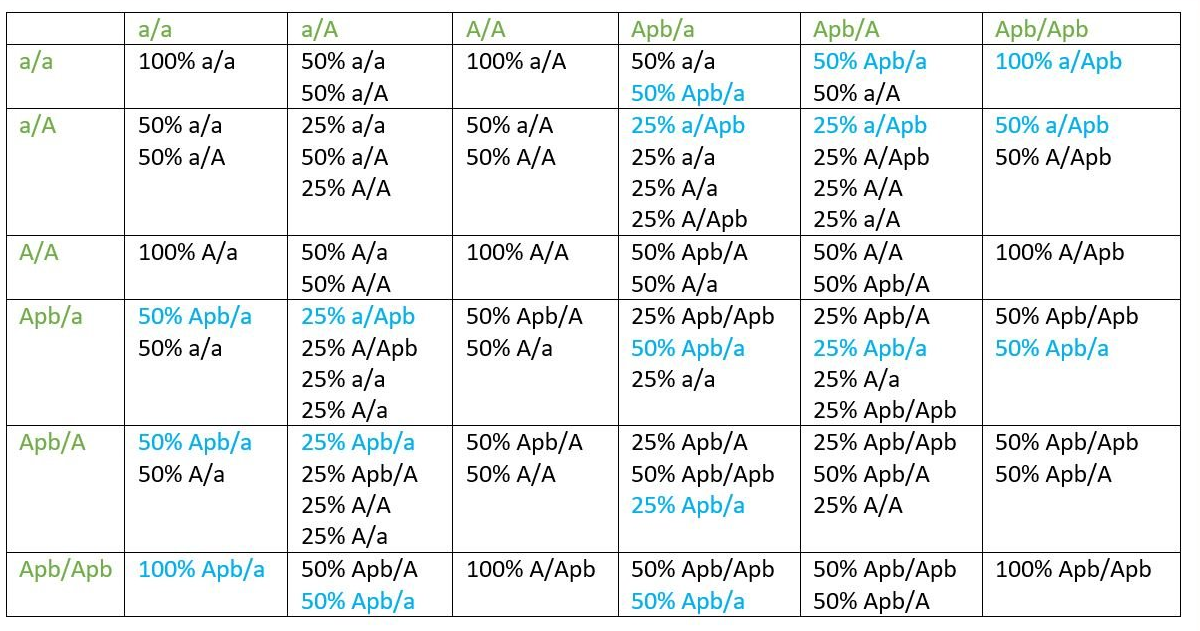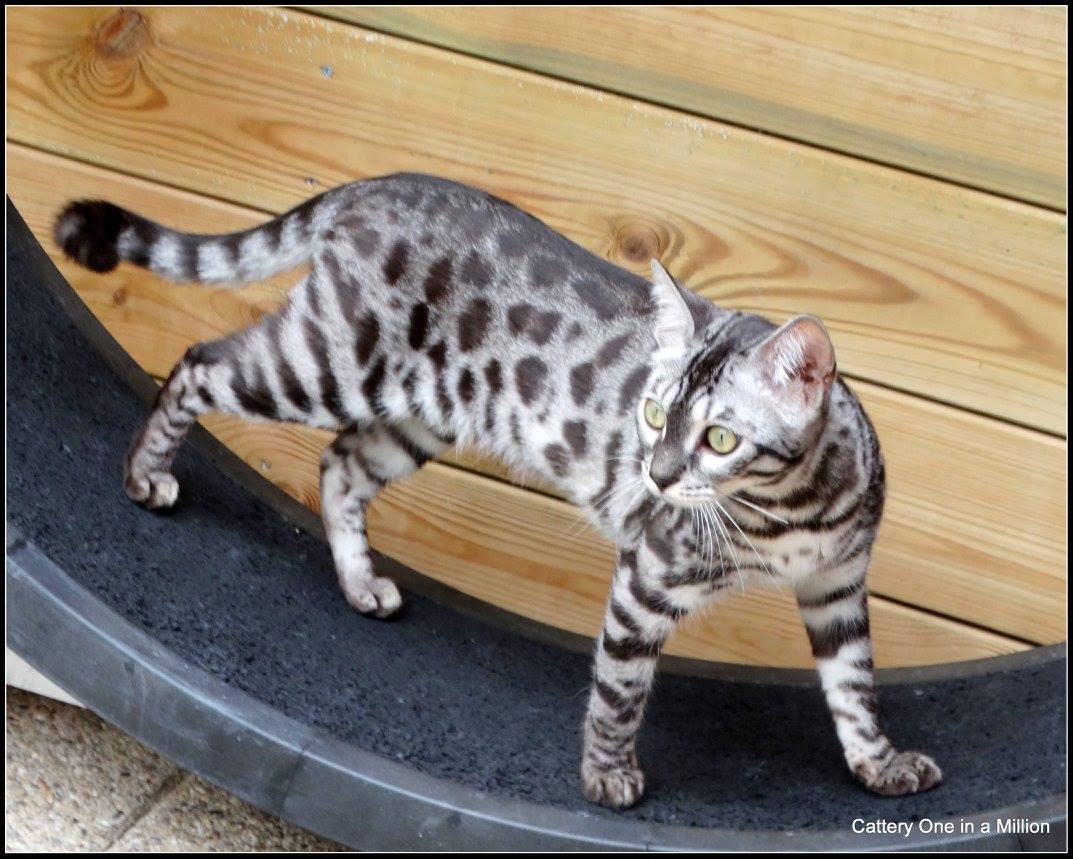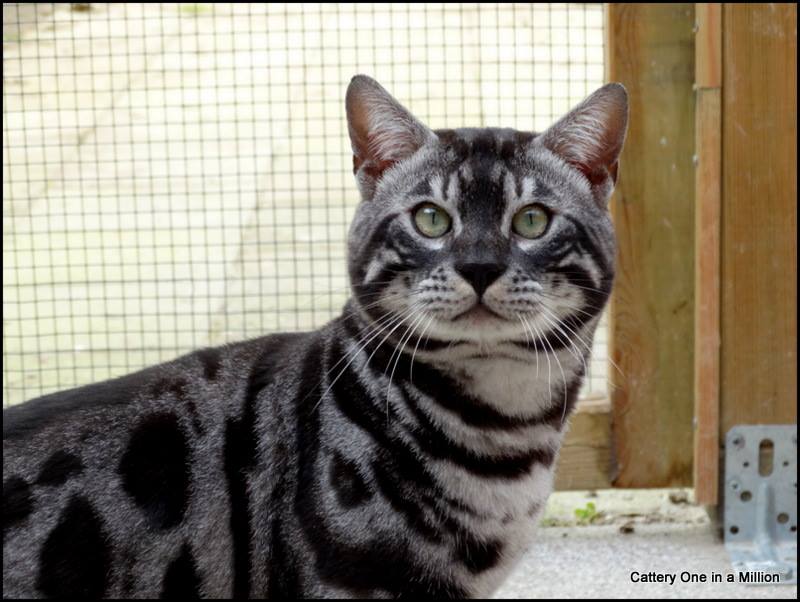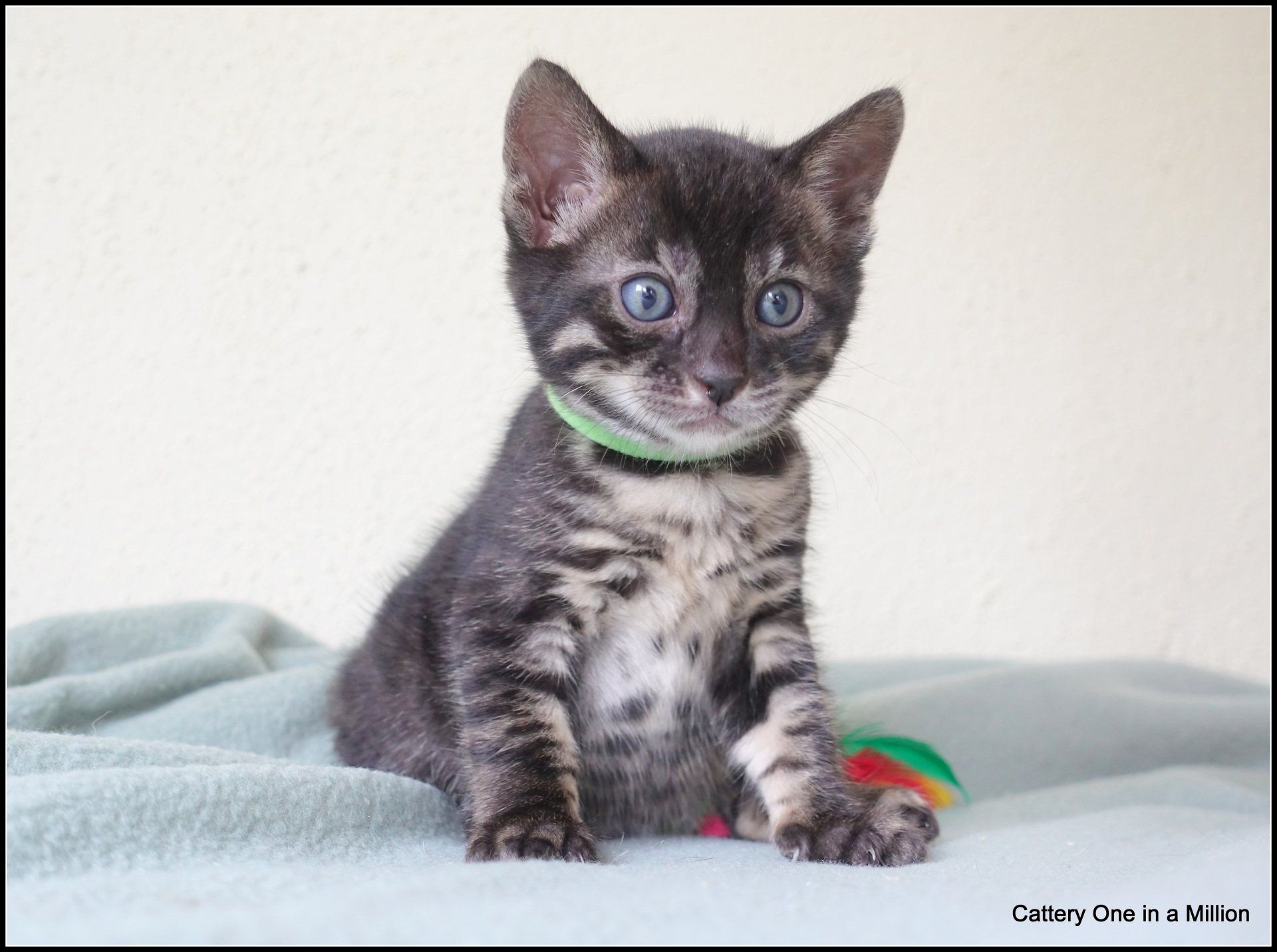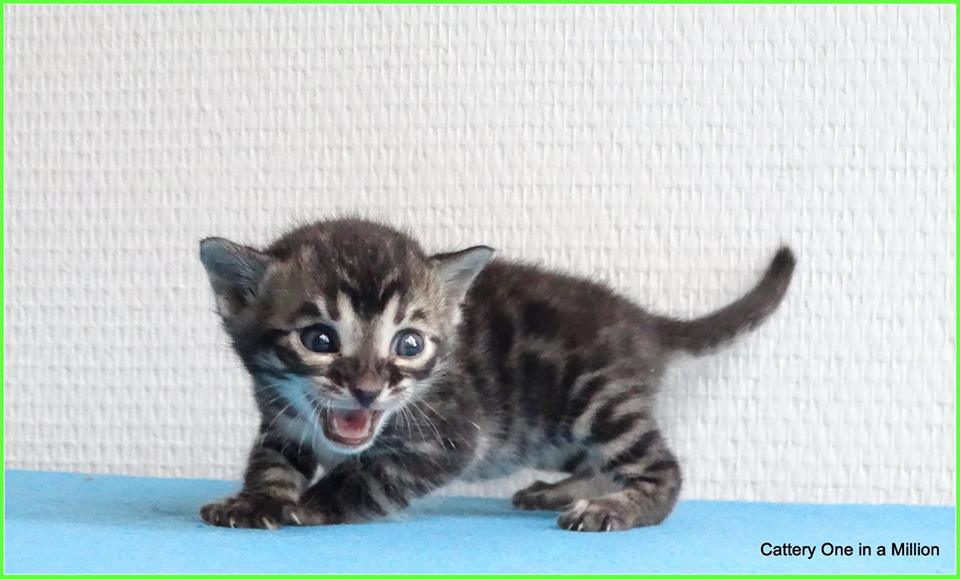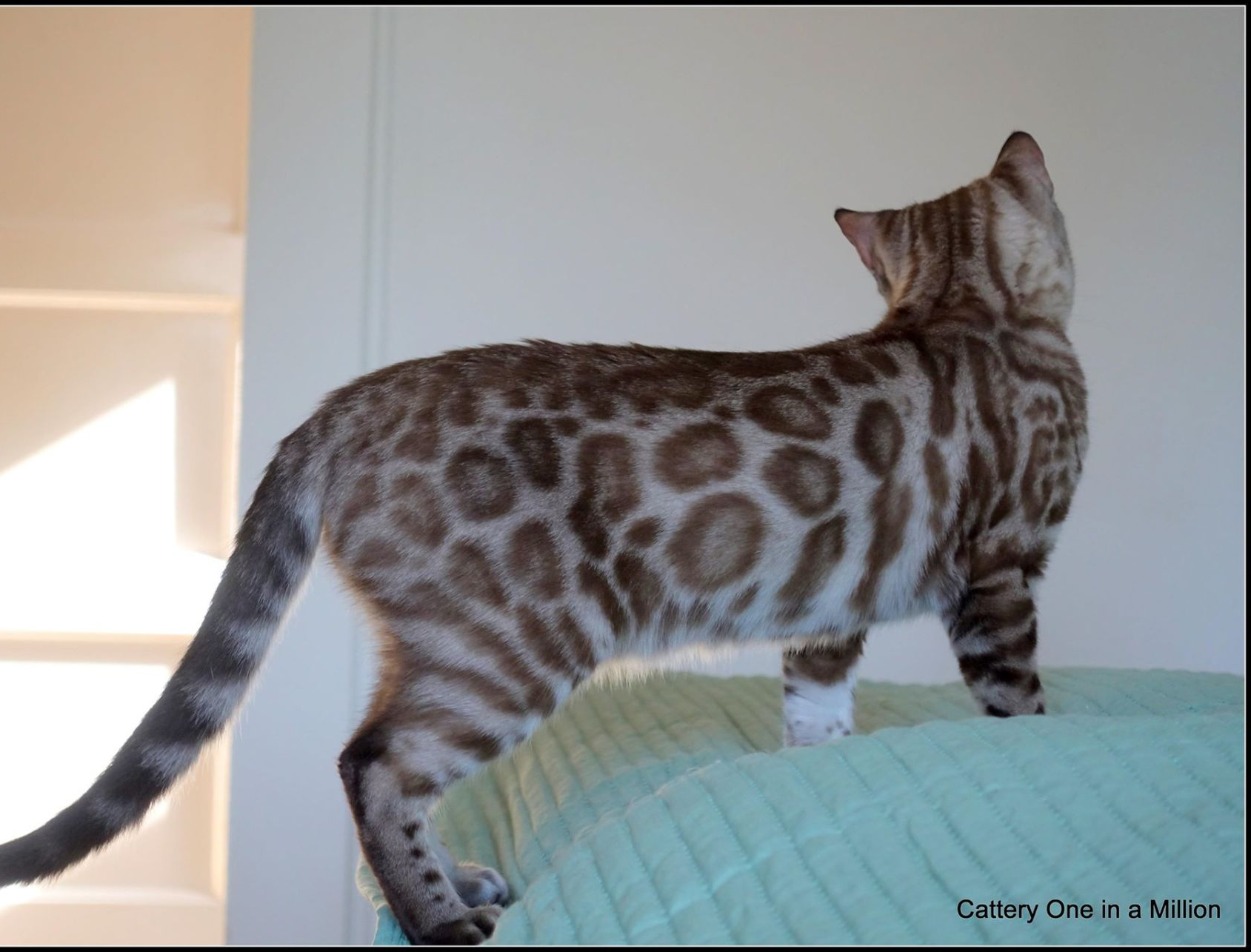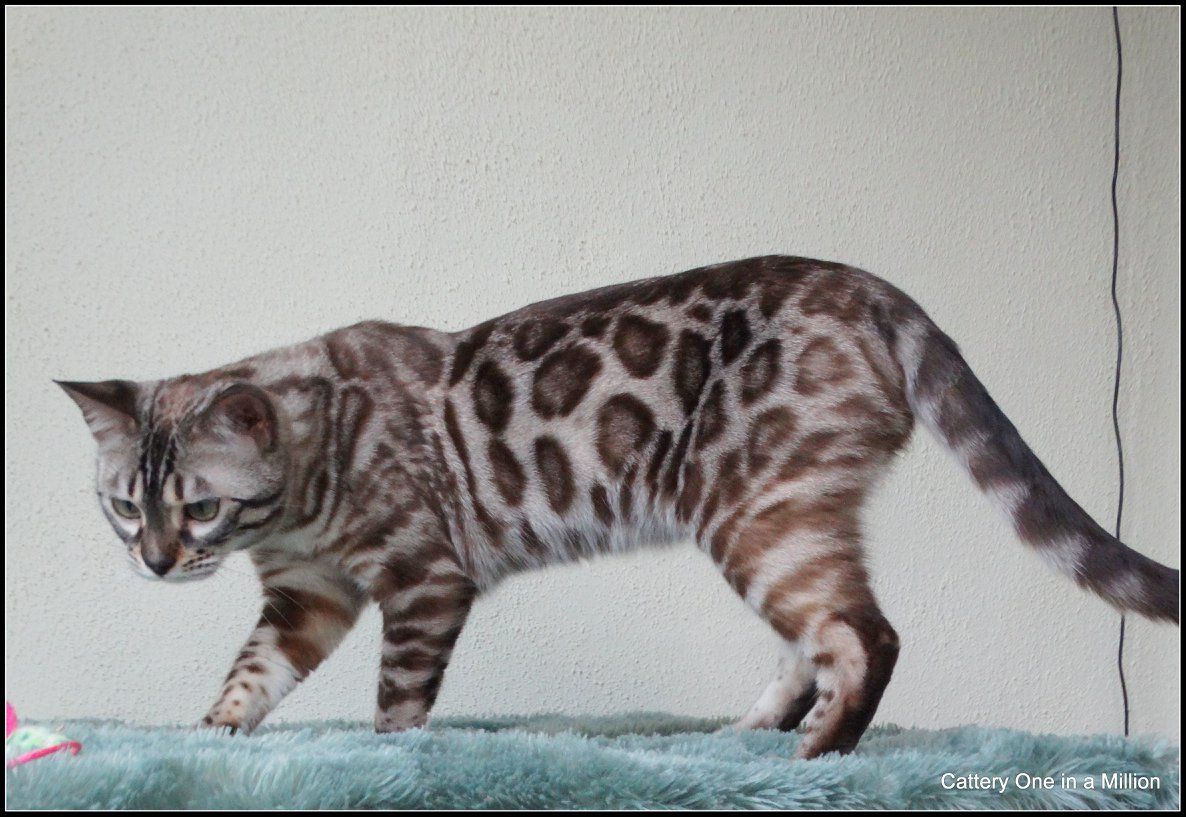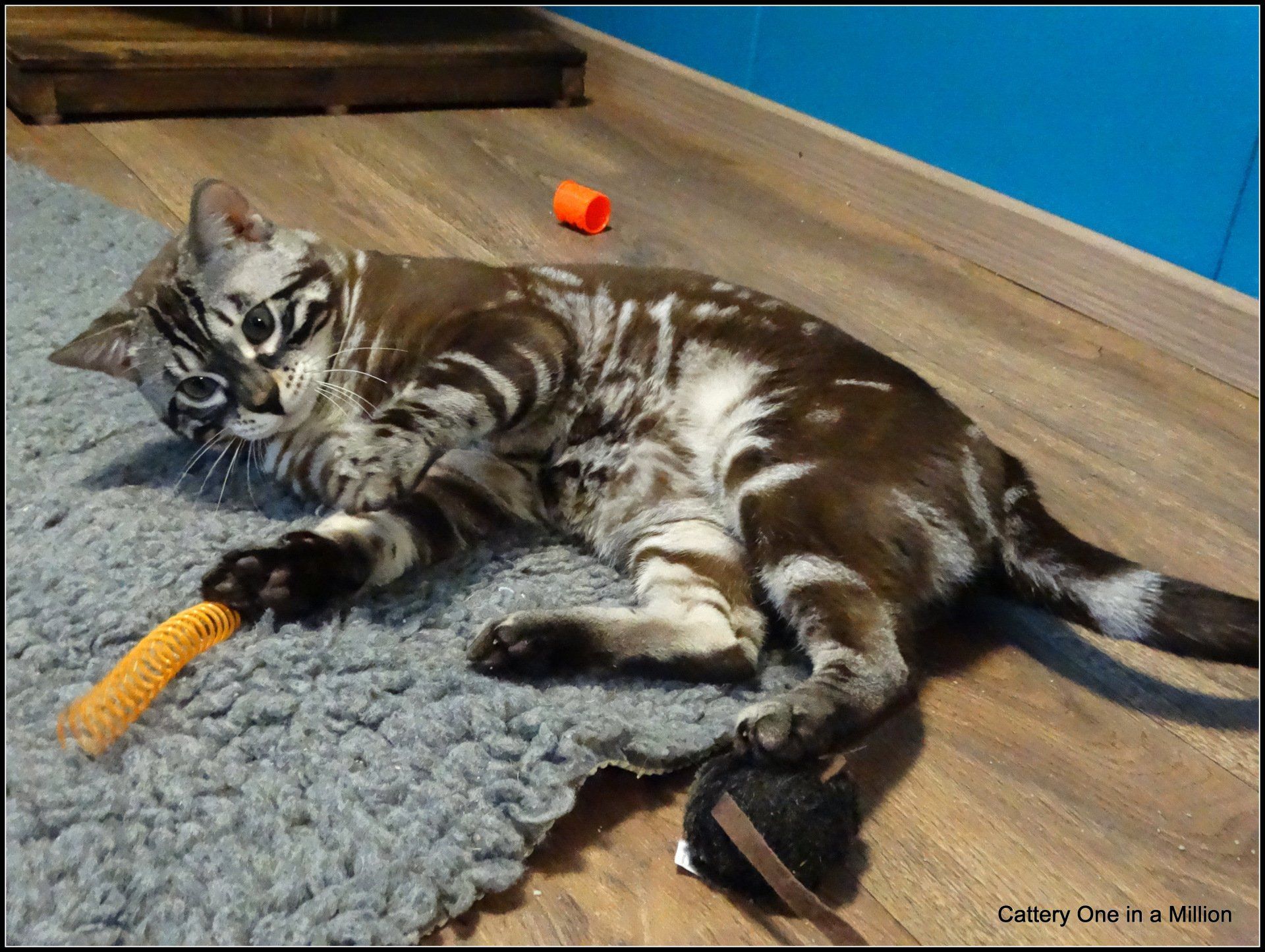The Charcoal Bengal
Charcoal is my favorite variant among the bengals. This arose because a charcoal Bengal was born in our very first litter. This was a big surprise for us. Mijnbengaaltjes One in a Million aka Noa was the first Brown charcoal of the Netherlands and Belgium. Because after the first year we were completely crazy about her, our cattery name has changed from "Mijnbengaaltjes" to "One in a Million". This is all thanks to Noa.
Feature of the Asian Leopard Cat Charcoal is a color / coat pattern that occurs in Bengals. It is a "gene" that ensures that the pattern and visibility of this is influenced. Charcoal comes in different colors including brown, silver and snow. In addition, charcoal's do not only come in different colors, they can also have a spotted, rosetted or marble pattern, just like with "normal" Bengals. Charcoal is a color/property seen more in the earlier generations. It is a trait that comes from the ALC (Asian Leopard Cat).
The characteristics of a Charcoal Bengal
A charcoal is often much darker colored than a "standard" Bengal. The coat often has a lot of contrast, so the difference between the background and the pattern is large. With a snow charcoal, the development is slightly slower. This is because a snow bengal is often born white or light-colored and only later gets a visible or clearer pattern. In a snow bengal, the mask will develop first. The charocal is often completely dark colored except around the eyes. This is called wearing a mask or glasses. This is the most obvious characteristic in which you can distinguish them. The nose bridge of a charcoal is completely dark colored as well as from the mascara lines to the nose bridge. Most charcoals have a "cape" when they are young. This is a dark strip on top of the back. Gosht markings are often visible there. With one charcoal the cape disappears completely, the other keeps it or keeps it partially.
Genetics
Genetically, the “gene” A locus is responsible for the pattern. Several variations are possible, each in its own way having an influence on the appearance of the pattern / coat of the Bengal. When a color test is performed on the DNA of the Bengal, these are the possible results of the test on the A locus gene. A / A = Agouti, the Bengal has a visible pattern. A / a = Bearer of Non – Agouti. This means carrier of a Solid color (snow), Smoke (silver) or Melanistic (black). The cat itself has a plain visible pattern. a / a = Non – Agouti, the Bengal is Solid (snow), Smoke (silver) or Melanistic (black). The begal in this case has an almost solid colored coat. Charcoal is also found on the A locus gene by means of a DNA test. This gene is designated Apb, the ALC gene. The possibilities when testing for the A locus gene in charcoal bengals (or carriers) are the following. Apb / Apb = a double charcoal carrier. The cat itself is not a charcoal bengal but carries 2 x the ALC gene which is needed to get charcoal bengal. Apb / a = A Charcoal Bengal. The Bengal with this as DNA carries 1 x the ALC gene and 1 x the Non-Agouti gene. (smoke, melanistic or solid)Apb / A = A carrier of the charcoal gene (ALC gene). To easily read the possibilities when the genes of the Bengal are known, you can use a diagram. This looks like this. Only the blue colored ones are "real" charcoal. cats that are only Apb carriers (or double Apb) are often incorrectly called charcoal bengals.



